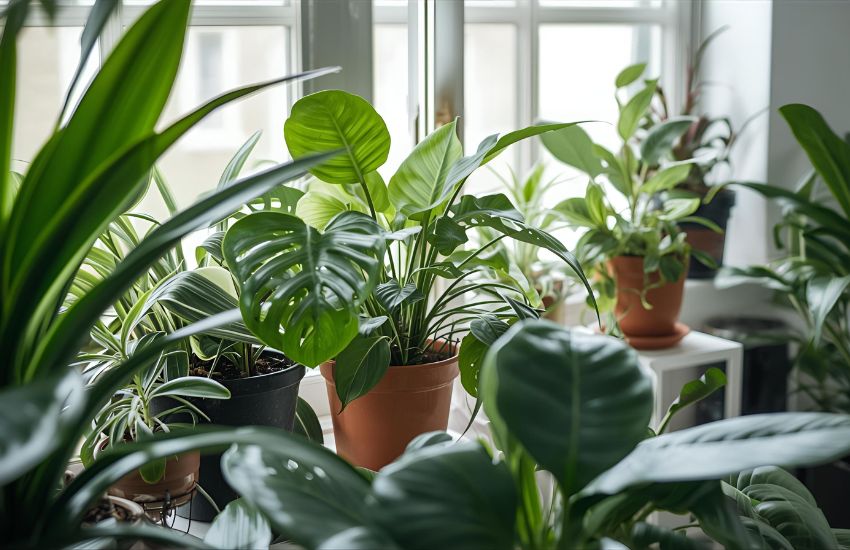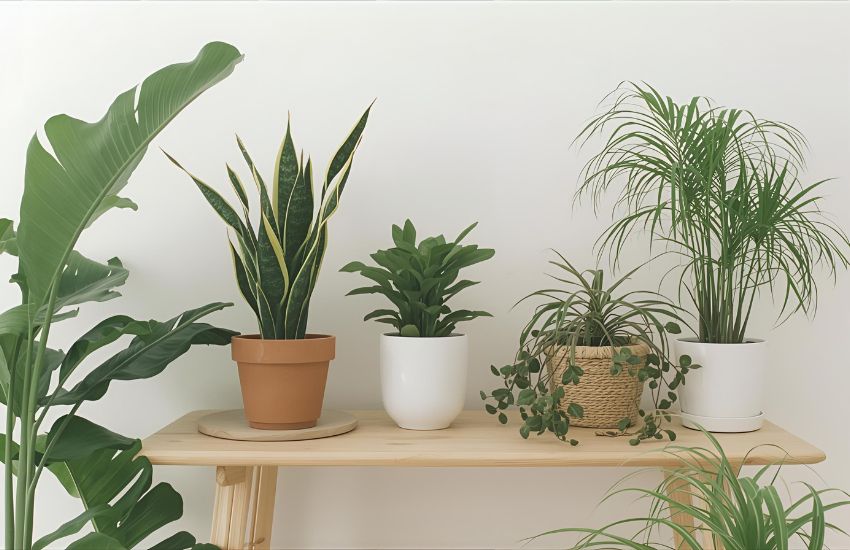Choosing the right plant for your indoor space can be both exciting and overwhelming especially if you’re a beginner looking for something that suits your lifestyle, space, and time. Whether you want a touch of greenery to brighten a shelf or a hardy houseplant that can tolerate low light and a bit of neglect, there’s an indoor plant perfect for you.
To choose the best indoor plant as a beginner, consider your space’s light conditions, how much care you can give, and your aesthetic preferences. Start with low-maintenance options like snake plant, pothos, or succulents that tolerate low light and are easy to care for indoors.
From understanding light conditions to identifying how much attention each plant requires, this guide will help you make informed decisions. Some plants like the pothos or snake plant are not only easy to care for but also tolerate a wide range of settings, including low light. Others, like succulents, cactus, and peace lilies, offer beauty with minimal effort while helping to improve air quality indoors.
This blog will walk you through how to assess your space, match it with the indoor plant that fits, and introduce you to ideal options like the lily, pothos, or succulent that are great for beginners. You’ll also discover plant care basics, tips for picking low-maintenance plants, and how to ensure your new houseplant thrives. Let’s help you find the perfect green companion.
Discover the Best Indoor Plant for Every Light Condition

Understanding how much light your indoor space receives is essential when trying to choose the right plant. Light plays a major role in determining how well a plant grows, maintains color, and resists stress. The good news is that there are suitable indoor houseplants for every type of light whether you’re working with a sunlit corner or a dim hallway.
For areas that receive bright, direct sunlight, you’ll want plants that are sun-loving and drought-resistant. Succulents and cacti, including the jade plant, thrive in these conditions. They’re known for their resilience, require infrequent watering, and are easy to grow. These types are also easy to take care of, making them ideal for those new to indoor gardening. Spider plants are another excellent option. They tolerate bright light and help clean the air, all while requiring minimal attention. Be careful, though too much exposure may cause some plants to wilt, especially during peak daylight hours.
If your room gets moderate or indirect light, a wider range of common houseplants becomes available to you. The ever-popular philodendron, recognized by its heart-shaped leaves, performs beautifully in filtered light and adapts easily. The swiss cheese plant, another standout, is equally versatile. These popular houseplants are native tropical plants and benefit from occasional misting, good drainage, and balanced care.
For rooms with limited natural light, such as offices or windowless corners, certain plants can still thrive. The prayer plant is an excellent choice it’s colorful, compact, and tolerates shade well. Once again, the adaptable philodendron proves reliable in low-light conditions. Keep in mind that any plant may wilt if placed too far from light sources, so occasional rotation can help balance growth. Some small plants, like pothos or ZZ plant, also perform well here, requiring minimal upkeep and forgiving of missed watering schedules.
By understanding your room’s light conditions and matching them with the right plant personality, you can create a beautiful and thriving indoor environment. Whether your style leans toward bold foliage, elegant vines, or minimalist succulents, smart plant placement is the key to long-term success in indoor gardening.
Houseplants for Beginners: Easy Picks to Liven Up Your Home

Starting your journey with houseplants can feel overwhelming, but the good news is that many varieties are both beautiful and forgiving. Whether you’re decorating a north-facing window or searching for greenery that doesn’t require daily maintenance, there’s a houseplant for everyone. These best houseplants are perfect for beginners and bring instant life and freshness to your living space.
Snake Plant (Sansevieria trifasciata)
Often called the snake plant, trifasciata is famous for its upright, sword-like leaves and strong architectural lines. It’s ideal for busy individuals since it needs minimal water and can thrive in bright spaces or even tolerate lower light. These plants need little care and are known for filtering air efficiently.
Peace Lily (Spathiphyllum)
With its elegant white flowers and glossy green leaves, the spathiphyllum is an excellent choice for anyone seeking style and simplicity. It prefers moist conditions but can handle occasional missed waterings. These plants are known to grow best in moderate to bright, indirect light and adapt well to common indoor environments.
Devil’s Ivy (Epipremnum aureum)
Commonly known as devil’s ivy, this vining plant (also called epipremnum) features heart-shaped leaves with vibrant variegation and long trailing stems. It can grow on a trellis or cascade from hanging pots. Since it doesn’t need much light and is extremely tolerant, it’s a top pick for beginners with lower light homes.
Spider Plant (Chlorophytum comosum)
One of the most popular houseplants, the chlorophytum comosum is a perfect starter plant. It produces arching green-and-white striped leaves and tiny plantlets, which you can repot. It’s easy to care for, and the greenery brightens any room. This plant will thrive in bright spots but can also do well in shaded areas.
Rubber Plant (Ficus elastica)
If you’re looking for a bold, architectural statement, the ficus elastica is a wonderful addition. It has large, waxy leaves and can grow into a striking indoor tree. It needs bright light to avoid becoming spindly, and you’ll want to move your plant if it’s not getting enough sun. Keep its moist soil balanced and follow basic care instructions.
Conclusion
Choosing the best houseplants for your lifestyle doesn’t have to be complicated especially when you know what to look for. By understanding your indoor space, assessing its light and humidity levels, and being mindful of your availability for basic care instructions, you can successfully select the perfect houseplant for everyone, even if you’re a beginner. From the air-purifying snake plant and trailing beauty of devil’s ivy, to the elegant spathiphyllum and the low-maintenance chlorophytum comosum, there’s a plant that fits every home and routine.
These plants are known not just for their aesthetic value, but also for their resilience and ability to thrive in bright or lower light conditions, often with very little care. Whether you need a statement piece like ficus elastica or compact small plants for a north-facing window, the right choices will ensure your greenery grows with confidence and ease.
Ready to transform your space with greenery that fits your lifestyle? Explore more about watering needs, plant care, and how to choose the right indoor plant to get started on your indoor gardening journey today. Your ideal houseplant is just a decision away bring home a touch of nature that truly thrives with you.
Frequently Asked Questions (How to Choose the Best Indoor Plant for You: A Beginner’s Guide)
What factors should I consider before choosing an indoor plant?
Consider your space, light availability, humidity, maintenance level, and whether you want decorative, air-purifying, or functional plants like herbs. Matching the plant’s needs to your environment ensures long-term success.
Which indoor plants are best for beginners?
Easy-care plants include pothos, snake plant, ZZ plant, and peace lily. These varieties tolerate low light, irregular watering, and require minimal upkeep perfect for first-time plant owners.
How do I know if my home has the right light for a plant?
Observe natural light patterns. South-facing windows get the most sunlight, while north-facing ones are dimmer. Medium-light plants can thrive near east or west windows, while low-light species adapt well to shaded corners.
What if I don’t have much time for plant care?
Choose low-maintenance plants such as succulents, ZZ plants, or snake plants. These require infrequent watering and minimal attention, making them ideal for busy lifestyles.
